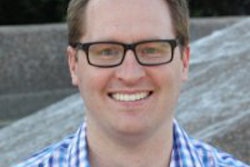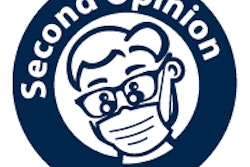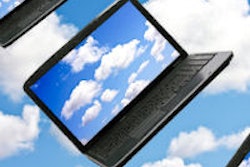
"Cloud computing" has gained notoriety as yet another piece of techie slang borne out of the information technology and social media craze. How else to help nontechnophiles visualize a networking infrastructure most often associated with complicated flow charts and laborious acronyms?
But cloud computing often gets a bad rap, according to those who are building companies and products around the advantages that a serverless IT infrastructure and Web-based software offer dental practices.
"Why would you have a server in your practice?" said Andy Jensen, vice president of marketing at Curve Dental. "It's a recipe for disaster. Just ask anyone who has lived through a hurricane."
Curve's Web-based dental software enables dentists to capture, store, and access patient information -- including images -- via "the cloud," reducing hardware and IT costs and eliminating backup and storage concerns, according to the company. In addition, practitioners can access the system from anywhere using a computer, a tablet, or even a smartphone.
“You never have to worry about running out of hardware space.”
"Being on the cloud offers several advantages," Jensen said. "The doctor doesn't have to have a server in the practice and doesn't have to worry about backups or upgrades. We had a doctor call yesterday whose practice had burned to the ground, and if he'd been using the cloud, he would still have all his data."
Curve's digital imaging feature allows practitioners to capture and store x-ray and intraoral images in the cloud. It is compatible with a variety of sensors, including Schick, Suni, Gendex, Eva, Owandy, and Kodak, and is native to Curve's practice management software, Jensen noted.
"And you never have to worry about running out of hardware space," he said. "It's like a Web-based PACS [picture archiving and communications system]."
And what if the Internet connection goes down? "It happens, but the Internet is treated like a utility, so if a line is cut, the trucks are rolling immediately," Jensen said. "Compare that to a doctor's server going down -- the IT guy is going to say, 'I'll get there as soon as I can.'"
Josh Berd, DDS, is a Curve customer with two practices in San Francisco. Dr. Berd, who earned his DDS from the University of Pacific (UOP) School of Dentistry and has been practicing since August 2010 as well as teaching at UOP, transitioned from Dentrix to Curve last year and is now completely digital (including x-rays) in both offices.
"Being able to seamlessly access patient records from either of my two locations (as well as from home or on the road) was the major reason [for implementing Curve]," he said. "But also I believe that cloud-based software is more hassle-free than traditional systems. Another major plus is that Curve integrates with my digital sensors and allows me to upload images directly to the cloud. Patient education is also a big part of my practice, and Curve allows me to stream patient education videos directly from their website."
Registration and training with Curve were also a snap, Dr. Berd added. "The interface of the program is very user friendly and pleasant to look at, like learning to use Google calendar or a new Apple device such as an iPad or iPhone -- it's all very intuitive."
While the system currently does not offer digital forms such as health history, consent, and insurance forms, this feature will be released "in the next few weeks," according to Jensen.
Ensuring HIPAA compliance
Digital collaboration and HIPAA compliance also are key drivers behind the growing interest in serverless computing, according to Rohit Joshi, CEO of Brightsquid. Brightsquid, which was founded in 2003, has its roots in medical data sharing and first brought its cloud-based service to dentistry in January 2011 with a beta test and January 2012 with a commercial product.
The Brightsquid software integrates with most dental practice management and laboratory systems, and enables DICOM images, patient photos, case details, and STL files to be securely shared between dentists, specialists, and labs. Updated cases and notes from colleagues are presented on the home page, and cases can be shared with individuals or definable groups of colleagues. Subscribers can control what data are shared and what level of access colleagues have to the data, and they can also maintain control over what happens with the case after it's shared. In addition, users can annotate case images and related information to share with colleagues.
"We are trying to help the world break free from the silo system," Joshi said. "In dentistry, there are still a lot of unique channels of communication. For example, if I have a Sirona system, I use Sirona software to communicate with other Sirona systems and Sirona labs. But the world is opening up. Up until the past year, I'm not sure that dentists and the dental community were thinking about the advantages this brings. But we are seeing now that labs in particular are looking for more open systems."
“We're trying to help the world break free from the silo system.”
One reason for the interest by dental labs is the growing emphasis on HIPAA compliance and the increasing number of digital impressioning systems, Joshi noted.
"It is still very common for us to see patient names attached to some sort of imaging being sent via Dropbox, YouSendIt, even email, and those are all typically noncompliant methods," he said. "We are finding that people are gravitating toward noncompliance because they don't fully understand the issue. Three years ago at the Chicago Midwinter Meeting, we were talking mostly about digital collaboration. Now we spend at least as much time saying, 'You can't use email for this.' "
Some dental labs are taking a leadership role in this by developing privacy policies and adopting the cloud-based approach, he added -- such as Aurum Group, a Brightsquid customer and the largest dental lab in Canada, with facilities in the U.S. and Europe also.
"Digitalization has its advantages and challenges," said Mark Maier, vice president of corporate development at Aurum Group. "Work flow can become more complicated, with more parties in the chain and many technologies. So for us, it's very important to have a mechanism to efficiently communicate with other labs and dentists, and have a seamless, streamlined, patient-centric audit trail for all issues around a case. This is a very image-focused industry, with no efficient way to share images."
If the Internet connection goes down, it goes down, Maier added. "Not much you can do about it," he said. "But with Brightsquid's multiple storage redundancies and security, they have been able to demonstrate that they've taken all the necessary measures to give us confidence of security and compliance."
A simpler approach
Now Brightsquid is gearing up to expand its presence among general dentists with a new product that Joshi believes will overcome some of the challenges the company has faced in this segment of the market.
What does a 'cloud' service cost?
Curve Dental
$3,000 initial cost (data conversion, training, and implementation)
Monthly subscription fee: $297 for up to two doctors
Brightsquid
$49/month for general dentists
(Secure Mail: $40/month)
$1,250/year for labs (50 licenses, 10 users in the lab)
$2,500/year for oral surgeons
"One of the things we recognized is that when I say we have a cloud-based dental collaboration platform, I lose them at 'cloud,' " he said. "So we created Secure Mail, which looks and feels a lot like Hotmail or Gmail but can attach up to 500 MB of images per message, whether a cone-beam CT or STL file or a bunch of images of a patient."
When a file is uploaded to Secure Mail, a notice is sent to the intended recipient's regular email. The notice contains only a link, no patient data or images. When the recipient clicks on the link, they can then log onto the system and access the image or data file.
Secure Mail, which will be officially launched next month at the Chicago Midwinter Meeting, will cost $40 a month for general dentists, Joshi noted.
"With Secure Mail, it's the simplicity of it," Maier said. "Secure Mail gives us a great tool and value add for general dentists. And anything that helps us help them is great."



















